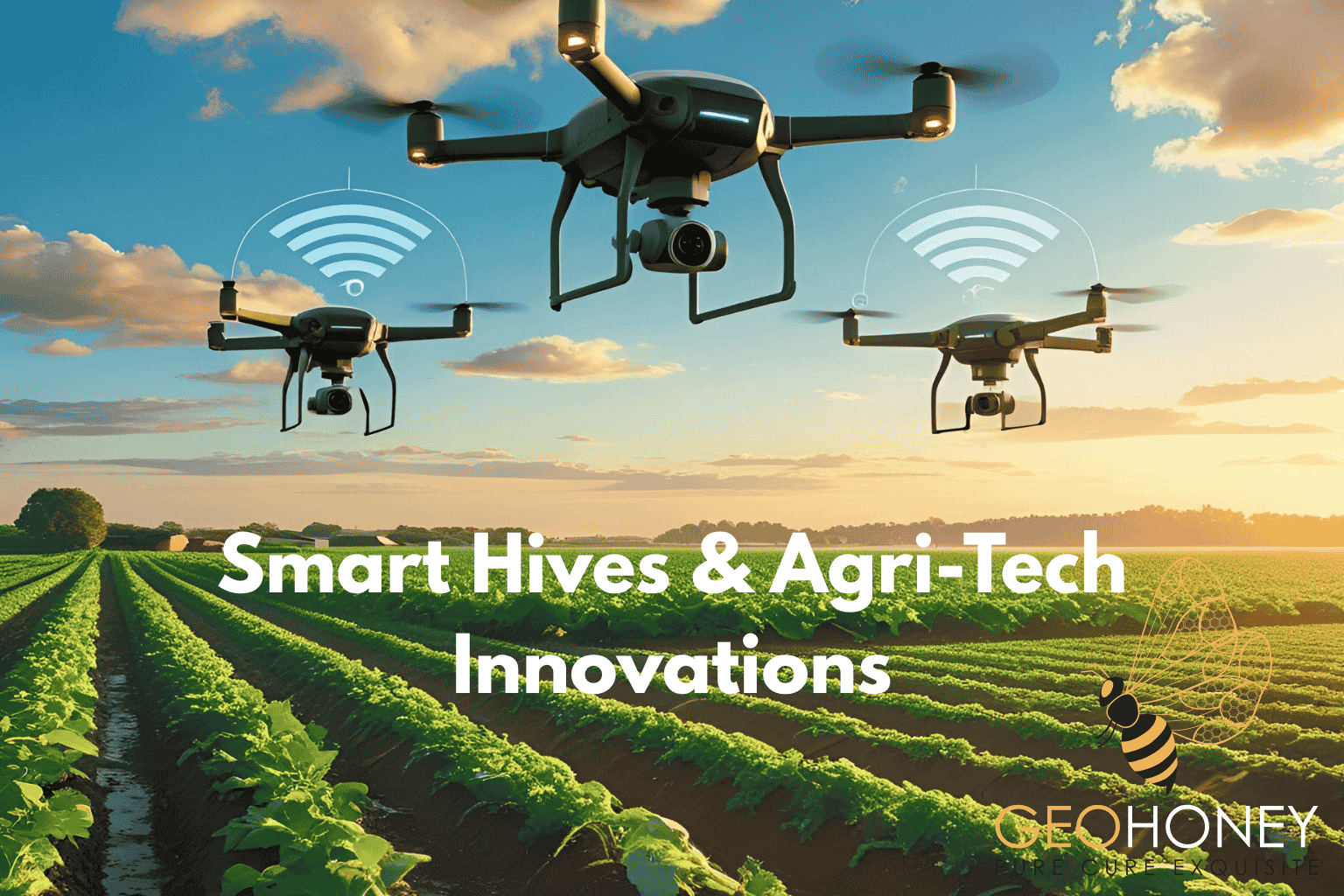- Tokyo: 18:46
- Singapore: 17:46
- Dubai: 13:46
- London: 09:46
- New York: 04:46
Smart Hives & Agri-Tech Innovations
- Reading Time: 2 minutes, 43 seconds
- Post Views: 1327
Smart hives represent the convergence of traditional beekeeping with advanced agri-tech tools like artificial intelligence (AI), the Internet of Things (IoT), and data analytics. These technologies are revolutionizing how beekeepers monitor, manage, and protect bee colonies while improving honey production efficiency, quality, and sustainability.
What Are Smart Hives?
Smart hives are beehives embedded with sensors and digital systems that track key hive metrics in real-time. These include:
Temperature & Humidity Monitoring
Bee Movement & Sound Analysis
Colony Health Indicators
Weight & Nectar Flow Tracking
Intruder or Pest Detection
The data collected is transmitted to cloud platforms or mobile apps, allowing beekeepers to remotely manage colonies with precision and take preventative actions before problems arise.
Key Technologies in Smart Beekeeping
AI & Machine Learning
Analyzes bee activity patterns and predicts hive issues such as queen loss or swarming.
Optimizes harvesting time based on nectar flow and honey maturity.
IoT Sensors
Measure hive temperature, humidity, CO₂ levels, and weight fluctuations.
Alerts are triggered when metrics deviate from optimal ranges.
GPS & Geolocation
Tracks hive locations and monitors for theft or relocation.
Correlates environmental conditions (e.g., nearby pesticide usage) with hive health.
Blockchain Traceability
Records and stores honey data from hive to bottle—ensuring transparency and authenticity.
Especially useful in building trust with consumers and avoiding counterfeit products.
Solar Energy Integration
Powers devices sustainably, enabling off-grid hive monitoring in remote or high-altitude areas.
Benefits of Smart Hive Technology
Improved Colony Survival Rates
Real-time alerts help prevent disease outbreaks, overheating, starvation, or pest infestations.Efficient Honey Harvesting
Smart weight sensors indicate optimal harvest times, minimizing disturbance to bees.Data-Driven Beekeeping
Enables predictive beekeeping—reducing manual inspections and increasing yield with less stress to the colony.Environmental Insights
Helps track local climate changes, bloom patterns, and pollination success—supporting biodiversity conservation.
Geohoney’s Role in Smart Beekeeping
As a pioneer in green-tech honey production, Geohoney has integrated patented monofloral farming technology and AI-enabled systems across its global honey farms. Their innovations include:
Energy-efficient hives that reduce bee foraging strain.
AI-based yield prediction models to optimize monofloral honey production.
Traceable honey supply chains backed by blockchain verification.
With plans to expand to 10,000 smart hive locations by 2030, Geohoney is shaping the future of sustainable apiculture and food security.
Future Outlook
Smart hives are central to the global push toward precision agriculture and climate-resilient farming. In the coming years, expect:
Autonomous drone pollinators for unreachable crops.
AI-powered bee genomics to breed disease-resistant queens.
Global data-sharing platforms to tackle colony collapse and protect pollinators.











